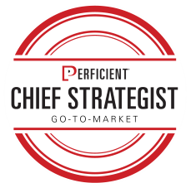I’ve had the pleasure of working with many small and mid-sized manufacturers. These companies are typically much more flexible and able to mobilize quickly compared to their larger counterparts.
If you have a concept for a marketing campaign, financial reporting, or an improved process, you have the opportunity to walk into the head of that function’s office, grab a small team and execute.
Companies like this may not have the buying power to get lower costs with suppliers, but have a tremendous opportunity through staying nimble and creative, without layers of management approvals to alter new products to keep costs low and get to market faster.
However, many of these smaller companies do not behave this way. When it comes to product innovation and monetizing a concept, smaller companies cannot keep up with the larger ones. In recent conversations with CEOs of some of these companies, they list getting a new product or feature to market fast as one of their biggest concerns.
The Future is Digital
Becoming digital is the surest way for you to understand your customers' needs and meet their expectations. Learn how Perficient can help anticipate what's ahead for you and your customer with a digital strategy centered around empathy, alignment, and agility.
So, why are these small, nimble, and creative companies having so much trouble? They do all the right up-front analysis. They asses the market size, as well as the pricing and distribution models. They know what competitors have today and how they can differentiate, and they have the marketing launch plan laid out and budgeted.
The problem is that this waterfall approach often leads to over-planning. They throw flexibility as a competitive advantage out the window when it comes to product development.
While taking the time to make everything “perfect,” plus taking the time to receive perfect mockups shipped in from overseas, competitors have launched similar products with similar new features. At the same time, prices have come down, and retail buyers have lost interest. The finish line has moved.
Instead, companies could consider an agile framework. Agile is focused on open and constant communications between the development team and the end-user of that product. The consumer is typically represented by a “product owner” whose role is to put a stamp on a product when it is at its absolute minimum.
When the most fundamental type of this product is ready to go to market, it is considered the “minimum viable product” or “MVP.” The development team can leverage this “MVP” to understand what users like about the product and can continuously build upon it. This ensures their foothold in the space and maintains their first-to-market status.
Products that must go through a retailer offer a different layer of complexity, but frequent check-ins with your buyer to share and get feedback on the iterations will make all the difference. If you have a good relationship with your merchant, run a small test in a few stores on the MVP and request feedback from customers through a direct-to-consumer campaign.
There is no better way to get direct, real-time feedback, and understand whether you are headed in the right direction!
Whether your product is direct-to-consumer or through a wholesaler, the agile approach provides immediate feedback that will guide you in the right direction, ensuring that your innovative new product is actually appealing to your customer!


